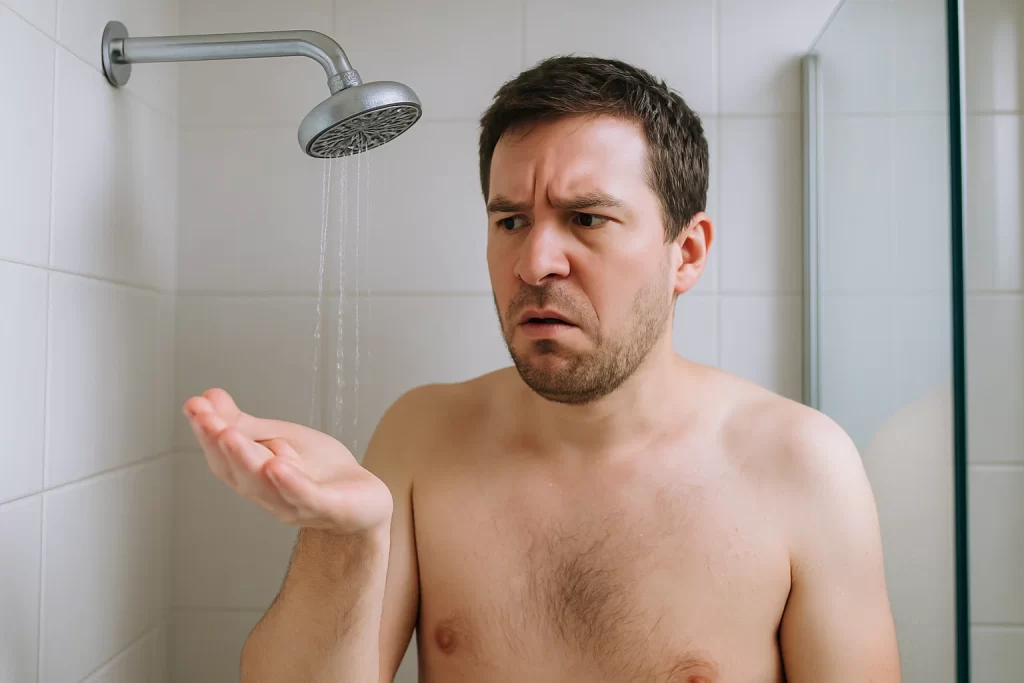Few things are more frustrating than stepping into the shower only to be met with a weak trickle of water – or trying to rinse dishes while waiting forever for enough water pressure to get the job done. Low water pressure is a common plumbing complaint among homeowners, and it can affect everything from your daily routine to your appliances’ efficiency. But what causes it, and how can you fix it?
Whether you’re dealing with a sudden drop in water pressure or a gradual decline, understanding the root cause is the first step toward a reliable solution. Let’s break down the most common reasons for low water pressure and how our team can help you restore your flow.

Common Causes of Low Water Pressure
1. Clogged Faucet Aerators or Showerheads
Over time, mineral deposits – especially in areas with hard water – can build up in faucet aerators or showerheads, restricting water flow. This is one of the easiest problems to spot and fix.
DIY Tip: Unscrew the aerator or showerhead and soak it in vinegar overnight to dissolve mineral buildup. If the issue persists, it could be more serious.
2. Faulty Pressure Regulator
Some homes are equipped with a water pressure regulator (or pressure-reducing valve) that controls the pressure entering from the main water line. If this component fails, it can either reduce pressure too much or allow it to spike.
Warning Signs: If your entire home experiences a sudden and dramatic drop in pressure – or if pressure fluctuates – your pressure regulator might be the culprit.
3. Hidden Water Leaks
A hidden leak somewhere in your plumbing system can divert water before it ever reaches your fixtures. Not only does this reduce pressure, but it can also lead to structural damage and increased utility bills. What to look for:
- Unexplained wet spots in the yard or walls
- Mold or mildew
- Rising water bills without increased usage
- The sound of running water when no fixtures are in use
4. Corroded or Old Pipes
In older homes, galvanized steel pipes can corrode from the inside out, gradually narrowing the water path and reducing pressure. Over time, this can affect multiple areas of the home.
Note: Replacing old pipes is the only permanent solution in this case and should be handled by a licensed plumber.
5. Municipal Water Supply Issues
Sometimes, the problem isn’t in your home at all. If the city’s water system is undergoing maintenance, or if your neighbors are experiencing the same issue, the drop in pressure may be coming from the main line.
What You Can Do: Call your local utility provider to ask about known issues or scheduled work.
Homeowner’s Low Water Pressure Checklist
Before calling a plumber, use this quick checklist to troubleshoot:
- Check multiple faucets – Is the issue isolated or affecting the whole house?
- Remove and clean faucet aerators and showerheads.
- Look for visible signs of leaks around the home.
- Check if your neighbors are experiencing the same issue.
- Inspect your pressure regulator (if present) for irregularities.
If you’ve gone through this list and still have concerns, it’s time to call in the professionals.
Contact Regal Plumbing, Heating and AC to schedule an appointment for plumbing services in Red Lion, PA. Committed to Service, Committed to You, Since 1974.

